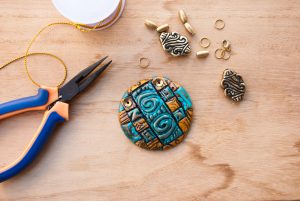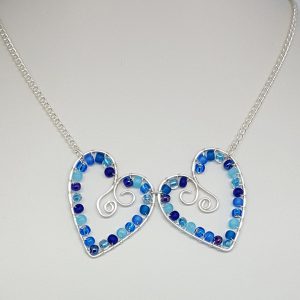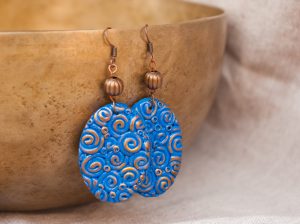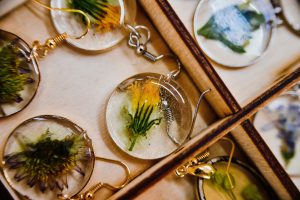As you may have seen from our previous blog in this series, there are many different tools and techniques that can be used with metal. Now we move onto non-metal, to give you all the information to find out which is the right style for you.
If you find the prospect of using metal a little daunting or you just don’t fancy working with it for whatever reason, there are many other alternatives which will provide colour and texture in ways that metal cannot. Many techniques also require minimal set up costs and can be produced at the kitchen table without the need for a designated workshop area. Take a look at some of the options below to see what takes your fancy.
Non-Metal
Beading is a huge jewellery genre which has been in existence for many thousands of years and it can be as simple or as complex as you choose to make it. You can make the beads themselves out of clay or wood for example; create pieces from shop bought beads using pliers and findings or weave sections of intricate patterns using tiny seed beads which can be made into objects such as bags and collars (to name but a few). The simplest way to start is to buy a kit which contains all the pieces you require to produce a piece of jewellery. Once you know what is involved you can start to experiment by choosing your own beads which will enable you to create unique pieces in a relatively short amount of time.
Found objects can create great beads if you have the means to drill holes into them. Things such as driftwood, glass and plastics offer an interesting breadth of possibilities which cost absolutely nothing and help to recycle items which would otherwise be discarded. Bead weaving is the most complex form of beading and involves techniques such as knotting, macramé, plaiting and braiding which can take considerable time and practise to learn. My advice would be to buy a good book to get you started such as ‘The Knotting and Braiding Bible’ by Dorothy Wood.
Clay comes in many different forms and most can be utilised for jewellery making with a little imagination! Fimo is polymer clay (which essentially means a compound made of identical smaller compounds) which comes in an enormous range of colours and effects’ meaning it has instant and immediate impact right from the outset. It’s an extremely versatile material which can be moulded by hand or with just a few basic hand tools and then hardened off in a conventional oven at a low heat. It’s ideal to use with children as it is available in an extra soft version (Fimo Kids) which is perfect for little hands. It’s non-toxic and can be used in a small space on a kitchen worktop or table so is perfect for intermittent jewellery making with very little outlay. Clay can be rolled, cut, textured and sculpted to produce a whole host of different effects.
Enamelling can be done without the need for expensive kilns and equipment thanks to modern innovations in crafting techniques and materials. Efcolour is a range of resin based enamelling powders that can be fired at low temperatures in a conventional oven without the need for a kiln. These powders can be applied to metal, wood, glass, porcelain and stone and are far less labour intensive than traditional enamels. Kits are a great way to get started as they contain everything you need to produce a piece of jewellery. (Efcolour Enamel Starter Set of 10, 861 000).
Resin can be quite a messy and smelly business but again thanks to modern technology it is now possible to buy resins which are far more user friendly and less problematic than ever before. Most resins are delivered in a two-part system which contains a coloured base in either a liquid or powder and a liquid hardening agent. The two parts need to be mixed together and allowed to cure to achieve the beautiful and even colour and shine we associate with resin. Many of the materials needed for resin work are hazardous and need to be handled with care as they can be extremely toxic, therefore it is essential to have a designated working area which is clean, ventilated and safely away from any children or pets. Handling resin takes a certain degree of skill so it’s advisable to do some reading around the subject before taking the plunge.
Whatever your interest or skill level, there is a jewellery technique for you so why not take the plunge and try something new today.
Written by Joanna Varney
Joanna has worked in and around the jewellery industry for well over 20 years. She has designed and created her own pieces as a designer maker, as well as working in jewellery retail on a much larger scale, producing designs and NPD for some of the UK’s largest high street retailers

Cooksongold




